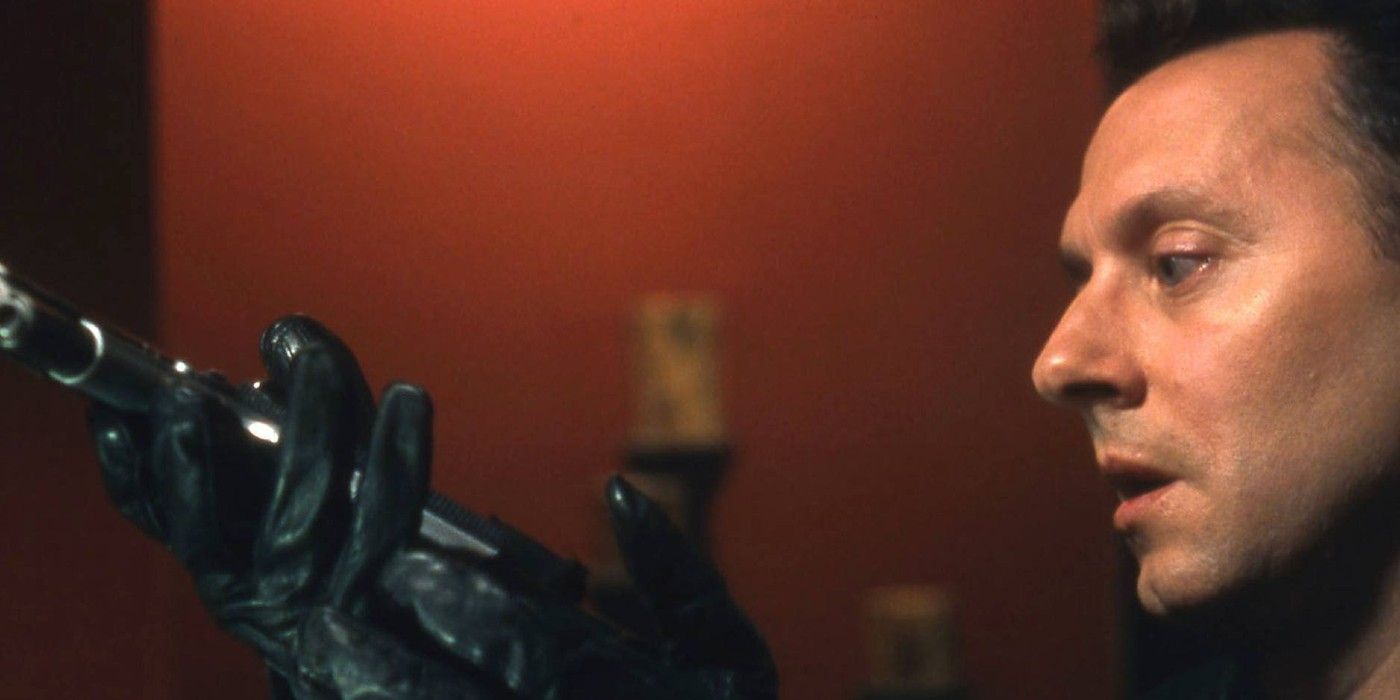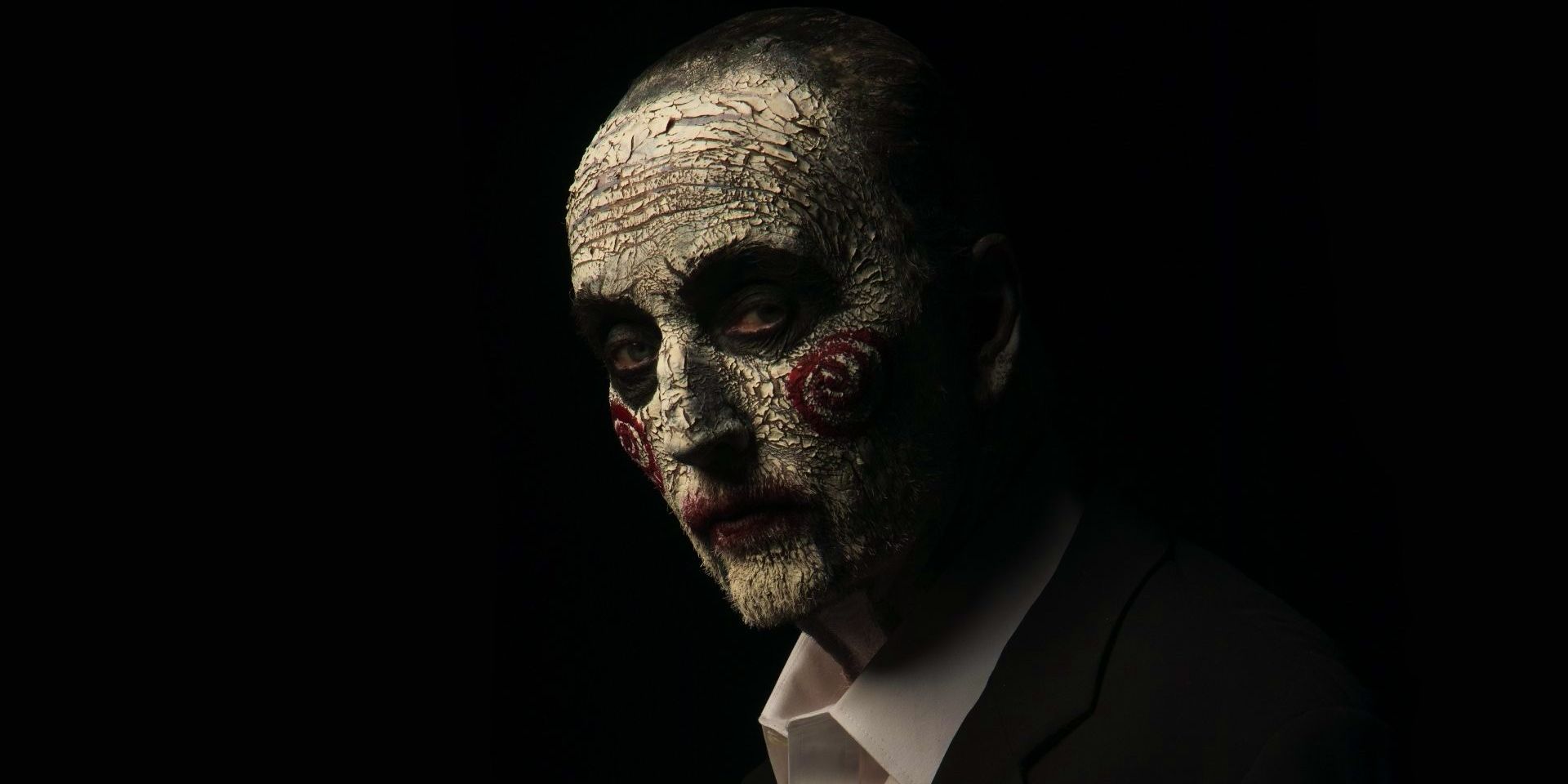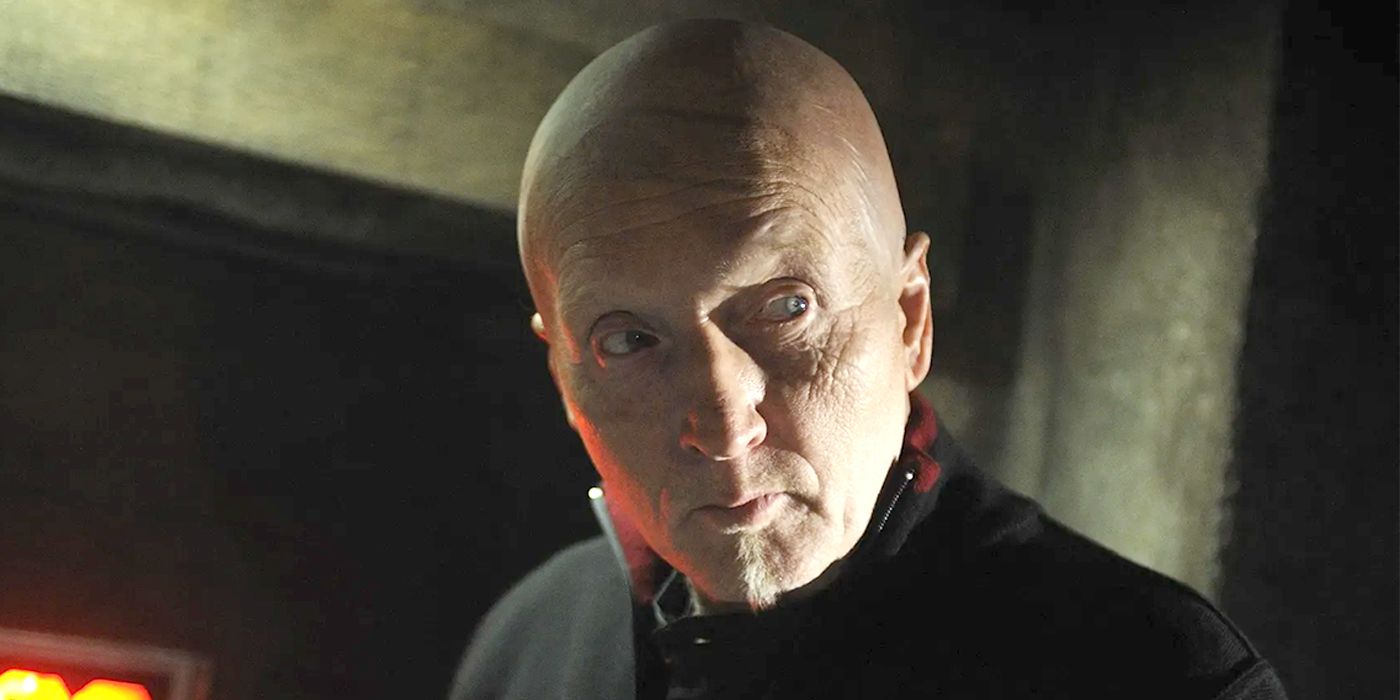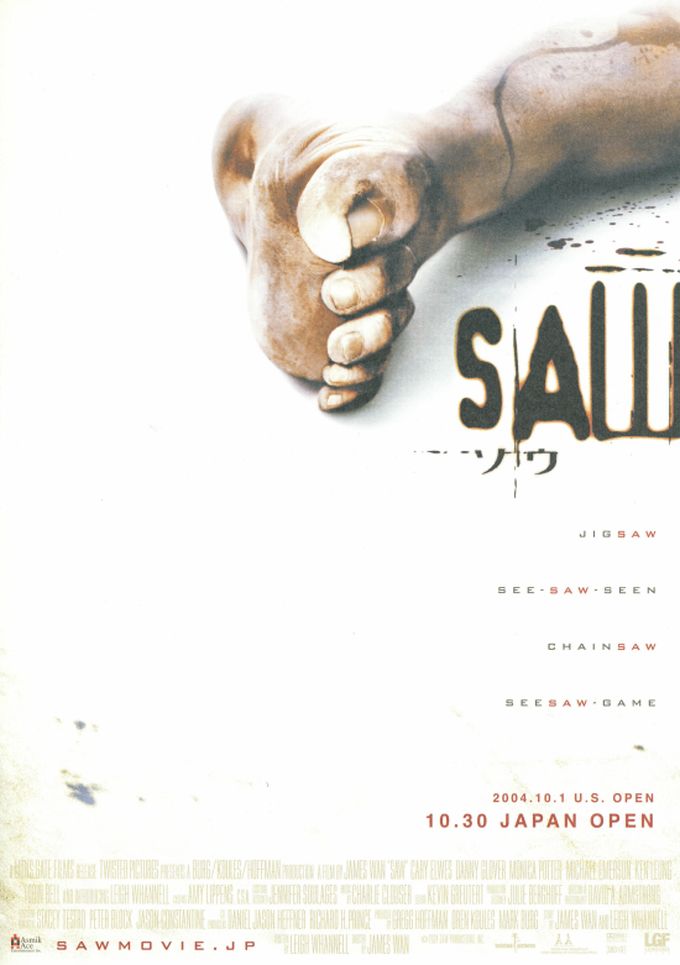
Saw: True Stories That Inspired The Movie
Of all the ways to describe the Saw horror movies, “inspired by a true story” probably isn’t one that commonly crosses viewers’ considerations, but is Saw based on a true story? Like John Kramer/Jigsaw, the Saw franchise didn’t fade away as quickly as some expected. There are now 11 Saw movies, including James Wan’s short film that started it all. The franchise has been a turning point – not only for the horror genre – but also for Leigh Whannell and James Wan, who have had successful careers in horror and beyond.
While every film in the franchise has been relatively popular and successful, Saw III ranks first at the box office. The threequel brought in nearly $165 million globally (via The Numbers), which is impressive for such a brutal film. The movies follow Kramer as he builds the most sadistic Saw traps in which his victims make tough decisions or die. Though the concept is reasonably far-fetched, the original inspirations for Whannell and Wan’s Saw franchise are rooted in reality. However, while the concept of Saw is based on real-life stories, is Saw based on a true story?
Saw’s Jigsaw Killer Was Inspired By A Real-Life Event
Leigh Whannell Based John Kramer On His Own Medical Condition
Leigh Whannell, writer for the first three horror films in the Saw franchise and plays Adam in the first film, got the idea for John Kramer’s character from a real-life experience at a hospital. In an interview with The AV Club, Whannell says that when he was 24, he began to have severe migraines. Fearful of something serious like a brain tumor, he eventually went to the hospital to get a series of tests performed, including an MRI.
Related
Every Saw Movie Ranked, Worst To Best (Including Saw X)
Ten gore-filled Saw movies have been made to date, full of torturous traps galore, and here’s how the entire franchise stacks up, worst to best.
Then, the initial conception of the Jigsaw killer, the Saw movie’s main villain, came to him. The filmmaker conjured the idea of a psychopath who was told they were going to die of a terminal illness. Whannell explained, “Instead of a doctor telling you, ‘You have a year to live, make the best of it,’ this guy would put people in a situation and say, ‘You have 10 minutes to live. How are you going to spend those 10 minutes? Are you going to get out of it?‘”
Saw’s Zep Character Is Based On A Real-Life Criminal
A Man In Real Life Said He Was Forced To Break Into People’s Houses
The character of Zep in the first Saw movie, responsible for carrying out Jigsaw’s kidnappings, was inspired by a bizarre true story that James Wan read when he was younger. According to a Saw II DVD featurette (via Youtube), Zep is based on a man breaking into people’s houses at night, not to steal, but to tickle their feet. Wan doesn’t give specific locations or dates about the particular case, but oddly enough, there are more than a few real-life “serial tickler” crime cases.
During interrogation, he told police that he was being forced to commit the crimes by someone else.
The man was eventually caught, and during interrogation, he told police that he was being forced to commit the crimes by someone else. The criminal later revealed that he was sent a jigsaw puzzle piece in the mail, instructing him to commit the acts. Wan added, “It was the creepiest thing I’d ever heard, I was so frightened. I remember after hearing that story, I slept for the next two, three nights with a hammer by my bedside.”
Is Spiral Based On A True Story?
Spiral Is Based On Un-Checked Police Brutality
Like the other Saw movies, Spiral isn’t 100% based on a true story. However, it similarly draws many of its themes — especially socially conscious ones — from real life. The Saw installment ends with the revelation that Zeke’s (Chris Rock) partner, William (Max Minghella), is the Jigsaw copycat. He sees his string of violence as fitting vengeance for police officers who abuse their power (police unjustly killed his father). Zeke’s father ends up killed by a SWAT team after being framed by William to look as if he’s holding a gun in a tense moment.
It’s easy to see how real-life events regarding police brutality helped inspire part of
Spiral
With the social climate in the United States being divided over police, how there have been increasing recordings of police abusing their power, and the Defund the Police movement, it’s easy to see how real-life events regarding police brutality helped inspire part of Spiral. Director Darren Lynn Bousman is quoted by MSN (via Io9) as saying about the subject matter and its connection to the Spiral story timeline in May 2021:
“I mean, sadly, the reality is this [police brutality] has been an issue long before [the deaths of] George Floyd and Breonna Taylor. This has been going on for years and years and years … [But] we always want to say something with the Saw movies. Even though they’re buried in blood and violence and guts and gore, there’s always messages to them. And that started with James Wan’s original and went through mine. We always wanted to say something more. I think that’s why the Saw
films have persevered while so many other franchises have not.”
How The Saw Sequels Betrayed Its True Story And Real Meaning
The Jigsaw Disciples Broke John Kramer’s Rules
While the earlier movies have inspired the question of Saw‘s possible basis in real events, the later films of the franchise are too outlandish to warrant it. It’s worth noting that prolific horror director James Wan only helmed the first Saw movie and co-wrote Saw III. The filmmaker only stayed on as producer for the rest of the franchise. While this gave him some creative control over the sequels, it’s not the same as being in the director’s chair. This could be one of the key reasons the Saw franchise has gotten worse over time and lost its overarching meaning.
|
Movie Title |
Release Date |
|---|---|
|
Saw |
October 29, 2004 |
|
Saw II |
October 28, 2005 |
|
Saw III |
October 27, 2006 |
|
Saw IV |
October 26, 2007 |
|
Saw V |
October 24, 2008 |
|
Saw VI |
October 23, 2009 |
|
Saw 3D |
October 29, 2010 |
|
Jigsaw |
October 27, 2017 |
|
Spiral |
May 14, 2021 |
|
Saw X |
September 29, 2023 |
At the beginning of the series, the movies were about a psychopath with a terminal illness, abducting unwitting victims to take part in an experiment that determines what they would do if they knew they had little time left to live. After Saw III, the franchise focused more on “torture porn,” and Saw’s kill counts kept getting higher.
Following Jigsaw’s replacement in later installments, some of the traps became inescapable, completely obliterating the original underlying meaning that kept the concept afloat. The kills became about gore and torture, which provided shocking onscreen murders but robbed them of any meaning or tension, detaching the story from its overall theme.
There Was A Saw Copycat Killer In Real Life
The Pizza Bomber & Matthew Tinling
Though the question of Saw’s inspiration from true stories is complicated, it comes full circle as the horror franchise went on to influence real-life events. In 2003, Brian Wells, a.k.a. the Pizza Bomber, was a victim of what would’ve been a Jigsaw copycat killer had it been a few years later, and it was documented in the Netflix series Evil Genius.
Wells was ultimately caught and arrested, and just a few minutes before the bomb squad arrived, the explosive device was detonated.
The pizza delivery man had an explosive collar locked around his neck, and he was told that it would detonate if he didn’t complete a scavenger hunt list, which included robbing a bank. Wells was ultimately caught and arrested, and just a few minutes before the bomb squad arrived, the explosive device was detonated, instantly killing Wells. The plot was for financial gain, and Wells was killed so that he couldn’t reveal anything to the police.
However, the rollout is eerily similar to the Jigsaw killer’s game with Zep, who was forced to commit atrocious acts by Kramer as his life was under threat. The criminals caught Wells off-guard, just as Kramer would do, as they ordered a pizza at a desolate transmitting tower at the end of a dirt road. While there are reports that Wells was a conspirator, the whole sequence of events sounds exactly like a Saw movie and one of Kramer’s sadistic “games.”
Evil Genius: The True Story of America’s Most Diabolical Bank Heist
is a Netflix documentary about the Pizza Bomber.
An actual Jigsaw copycat killer was even more disturbing, as Kramer’s torturing of victims more influenced Matthew Tinling than the meticulous planning. Tinling tortured Richard Hamilton by stabbing him 17 times, one of which was when Tinling sliced through the victim’s spinal cord (via Daily Mail), which is exactly what happens in Saw VI. The judge also revealed that police found DVDs of the Saw franchise in his apartment. In this case, there’s no denying Tingling was influenced by the Saw series.
How Saw Adapted A True Story Compared To Other Horror Movies
True stories inspire plenty of horror movies. The Texas Chainsaw Massacre claims to be based on a true story, but its retelling is very loose. The 1970s slasher movie is based on the killings of Ed Gein, similar to Psycho. However, both movies only took the idea of the killer’s actions and created unique villains that had little to do with the villain on whom it was based. Other movies like The Conjuring are based directly on supposed supernatural occurrences.
If there is a horror movie whose inspiration is very similar to
Saw
, it is
A Nightmare on Elm Street
.
However, if there is a horror movie whose inspiration is similar to Saw, it is A Nightmare on Elm Street. Its inspiration is almost identical in structure to Saw. Much like how Saw was based on Leigh Wannell’s fears or mortality, Wes Craven based Freddy Krueger on a man he saw outside his own home as a child, staring into his windows from the shadows. Also, like Saw’s story, which was based on the story of the Tickler, Craven based his story on a newspaper story he had read at the time.
In Craven’s case, he read a newspaper story about how young male Southeast Asian refugees were mysteriously dying in their sleep. 26 men died, and there were no medical reasons for their deaths. They fell asleep and never woke up. The story also indicated some of them were scared to go to sleep due to nightmares they had been having. Combining his childhood fear of the man in the alley with the news story helped Craven create Freddy, just like Whannell did to create Jigsaw in Saw.





